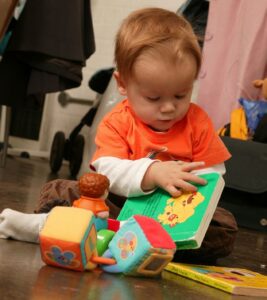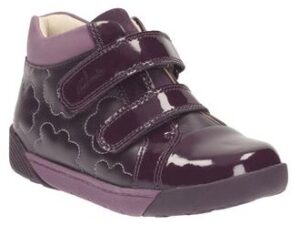Gross motor skill information for children with developmental delay
Information for parents and carers
Gross motor skills describe the way your child moves around, for example, by rolling, sitting, crawling, standing and walking, and their abilities within these positions.
Fine motor skills describe how your child uses their hands, both separately and together and how this affects their self-care skills and independence, for example, playing, feeding, dressing and writing.

What is developmental delay?
- Developmental delay can affect children differently.
- Some children are very delayed, others are only mildly delayed.
- In some children, it will affect all areas of their development, e.g. gross and fine motor skills, communication and understanding, where in others it only affects one area.
- If learning and understanding are very delayed, this affects how a child learns to move from one position to another and causes a delay in physical skills as well.

- Being included in every day play and family activities can help children meet their motor milestones at their own pace.
- Although the activities in each section are written in a sequence, it is not essential that your child achieves one skill before you move on to the next.
- This is especially true in the early stages of development where it is important to spend time in a variety of positions to develop different skills as each position has an effect on the other.
- For example, at around six months old, you can spend a lot of time playing with your child on the floor and can practice rolling alongside playing in a supported sitting position.
Babywalkers
Physiotherapists DO NOT recommend babywalkers or bouncers for any children, particularly those with developmental delay and altered muscle tone.
Why not?
Babywalkers place your child in a position which is not quite sitting or standing. They enable movement without your child having the proper awareness or control of their body. Development is a progressive sequence and at each stage, children learn different aspects of controlling their body which gradually come together to enable independent walking.
What other factors affect motor skill development?
There are several factors which contribute to gross motor delay in children with developmental delay. The most important of these are explained here.
Low muscle tone
Low muscle tone
Some children have quite floppy muscles (hypotonia or low muscle tone). This makes it harder for them to move against gravity and can affect all aspects of their physical development.
For example, in lying, their arms and legs will often rest flat on the floor or it may be difficult for them to learn to pull into a standing position.
Although the hypotonia may never disappear completely, with the right stimulation and good positioning, your child will acquire movement skills following a typical, but delayed pattern of development.
Hypermobility
Hypermobility
Children who have low muscle tone can be very flexible. They are often described as having lax ligaments, hypermobility or being double-jointed. This is because the muscles do not hold the joints together as tightly as in people with normal muscle tone. In most cases, although hypermobility is a factor in gross motor delay, it does not have any serious effects.
This extra flexibility is usually most noticeable in the fingers, ankles and knees. It can make it hard to control the position of the joints. People with hypermobility can find it difficult to know where their body is in relation to their environment, for example, slopes, different surfaces, where obstacles or furniture are.
Muscle strength
Muscle strength
If children have low muscle tone and hypermobility, muscle strength can often be lower than in other children of a similar age. Again, this can contribute to gross motor delay as children lack sufficient strength to pull themselves along or up to standing, or walk for longer periods.
Muscle strength and endurance will improve as your child becomes more active, but some children may continue to be less co-ordinated than their peers.
Footwear and orthotics
Footwear and orthotics
If your child has mild hypermobility or hypotonia, boot-style shoes from a good shoe shop will provide adequate support for their feet. Have your child’s feet measured properly for length and width. Avoid shoes which have very squashy soles and heel areas.

If your child is extremely flexible, a physiotherapist may decide that supportive boots or insoles would help control their foot posture while they are learning to stand and balance. These boots are not needed indefinitely and are not prescribed routinely.


